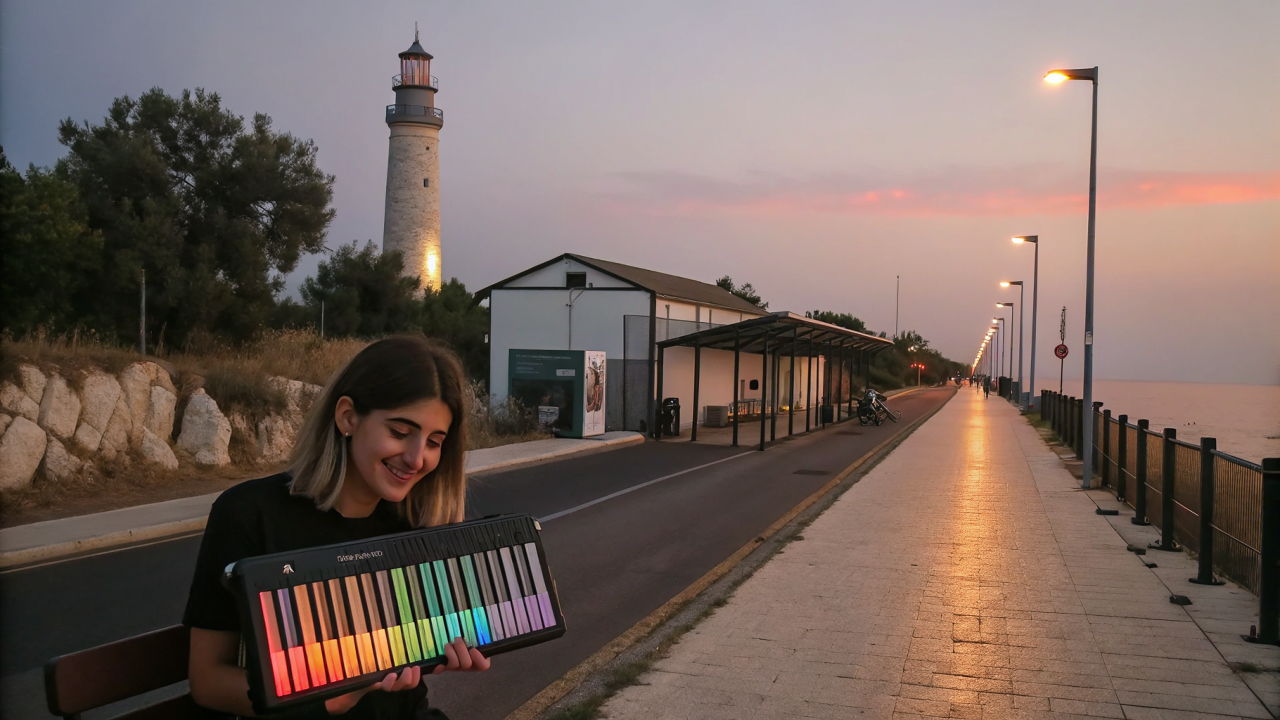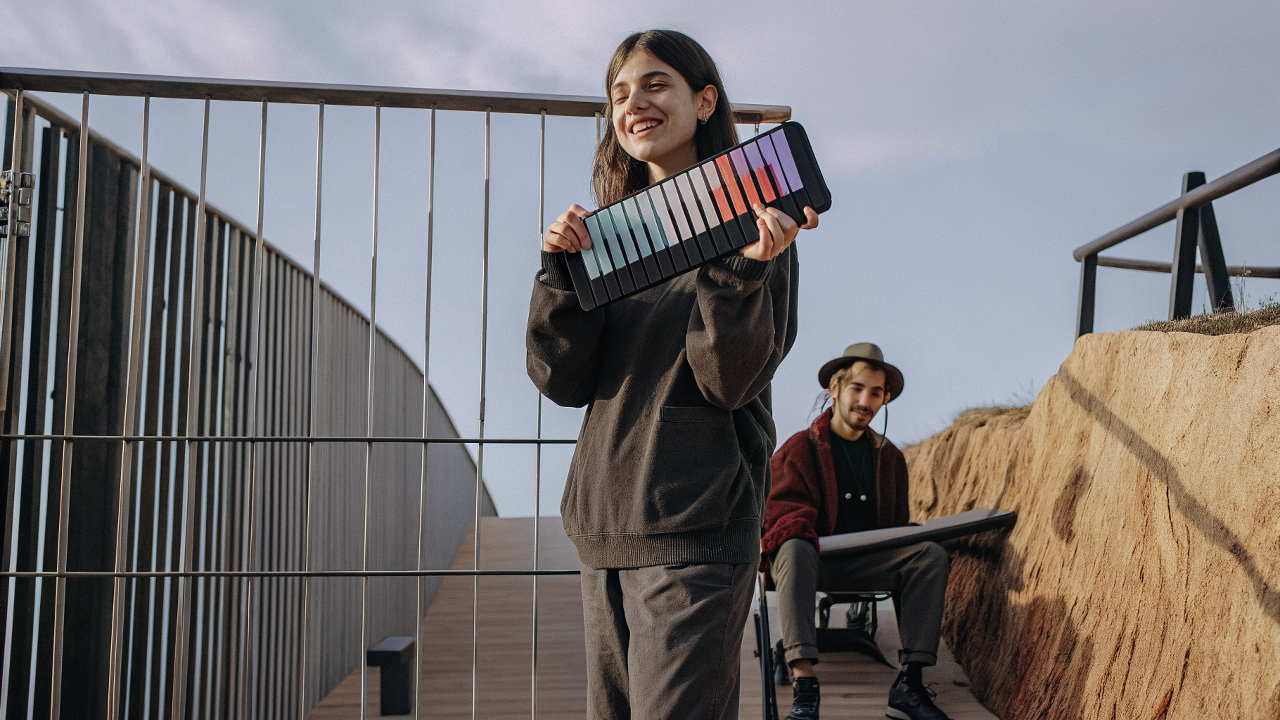
If you want a piano you can toss in a backpack, practice on the couch, or take to a dorm jam session, a handheld piano keyboard is the move for 2025. These compact instruments balance portability with enough keys and smart features to keep you motivated. In this buying guide, you’ll learn what to look for, how to avoid common pitfalls, and—most importantly—where to buy a handheld keyboard piano that fits your budget and goals.
We’ll also walk through different formats, from app-connected mini keyboards to a handheld piano you blow into (yep, that’s the melodica—more on that below). By the end, you’ll know exactly which handheld piano instrument suits you and where to snag the best deal.
A handheld piano keyboard is a lightweight, compact instrument you can carry with one hand and set up anywhere.
Typical specs:
You’ll see two broad categories:
If your goal is fast progress, recording, and modern practice workflows, a handheld keyboard piano that pairs with an app offers the most flexibility.

Use this checklist to compare any handheld piano instrument before you buy.
Look for responsive mini keys with consistent velocity. If you plan to sing and play, or practice two-hand pieces later, consider a model that can expand the key range with an add-on.
For true beginners, light-up keys or in-app visual guidance is a game changer. Progress dashboards, song libraries, and short daily drills make habits stick.
Under 5 lb with a slim footprint is ideal. A protective bag, strap, or snap-on modules keep everything tidy for travel.
Aim for multi-hour sessions on a single charge. USB-C charging and power-bank compatibility are practical for travel days.
Bluetooth/USB-MIDI lets your handheld keyboard piano serve two roles: a practice instrument and a DAW controller. Quick pairing and low latency matter.
If you want to play without a phone or laptop, a built-in speaker is convenient. If you’ll mostly use headphones or DAWs, clear monitoring is enough.
If you start with a compact board, can you expand later? A modular keyboard that adds keys or performance pads extends the lifespan of your purchase.

You have three reliable routes. Mixing them often gets the best value.
Buying direct usually gets you the most accurate info, current firmware, and fresh stock. You’ll also find bundles that include expansion modules, bags, or lesson access.
If you already know you want an app-connected, light-guided design, head straight to the smart keyboard product page to compare sets and see what’s included.
Large retailers may offer financing, quick shipping, and frequent sales. If you go this route, verify the latest model, return policy, and warranty coverage before checkout.
Below are practical picks framed by use case. We keep brand mentions light and focus on why each option fits.
Smart, modular handheld keyboard with light guidance
Light-up mini keyboard with guided lessons
Why it wins: Kids follow the lights, rack up points, and actually want to practice. Parents get quick setup and a progress view—no nagging required.
Compact handheld keyboard piano
Why it wins: Featherweight body, simple controls, and solid battery life. Plug in headphones, put in 15 minutes, and move on with your day.
Entry-level handheld piano keyboard
Why it wins: All the essentials—mini keys, app compatibility, rhythmic training—without a steep price tag.
Melodica-style handheld piano instrument
Why it wins: It’s tactile, expressive, and fun for live jams. Note: This handheld piano like instrument doesn’t connect to apps/DAWs like smart mini keyboards do, so it’s more about vibe than workflow.

For solid handheld keyboard piano options with app learning and MIDI, expect a mid-tier price for the main unit, with optional upgrades (like extra keys or performance pads) available when you’re ready. Melodicas are typically cheaper, but remember: they’re acoustic wind instruments, not app-connected keyboards.
If you answered yes to any of these, you’re firmly in handheld keyboard piano territory, not melodica land.
Yes. The compact format, light-up guidance, and app lessons reduce the early learning curve and help you play full songs sooner.
The latter is a melodica, a wind instrument with piano-style keys. It’s expressive and portable but won’t serve as a smart MIDI keyboard or connect to learning apps the way a mini keyboard can.
Start with 25–37 keys for melody, chords, and practice. If you plan to sing and play or learn left-hand bass lines, look for a modular expansion option.
No. Many handheld models pair with a phone or tablet. If you make covers or beats, a laptop/DAW gives you more control.
If you want the best mix of portability, learning speed, and creator-friendly features, go with a handheld keyboard piano that offers light guidance, in-app lessons, and a clear expansion path. That way, you can start small, actually play songs in week one, and grow into two-hand arrangements without rebuying your entire rig.
Read more

Which Digital Piano Should I Buy as a Beginner?
Ready to finally start playing? This guide will help you choose a keyboard piano for adults that fits your space, schedule, and goals—without drowning in specs. We’ll compare the main types, show y...

Top 5 Best Bluetooth APPS for Your Digital Piano
If you play on a Bluetooth-enabled keyboard, the right piano app can turn “I should practice” into “I can’t wait to practice.” This guide ranks the best app-connected keyboard experiences for begin...